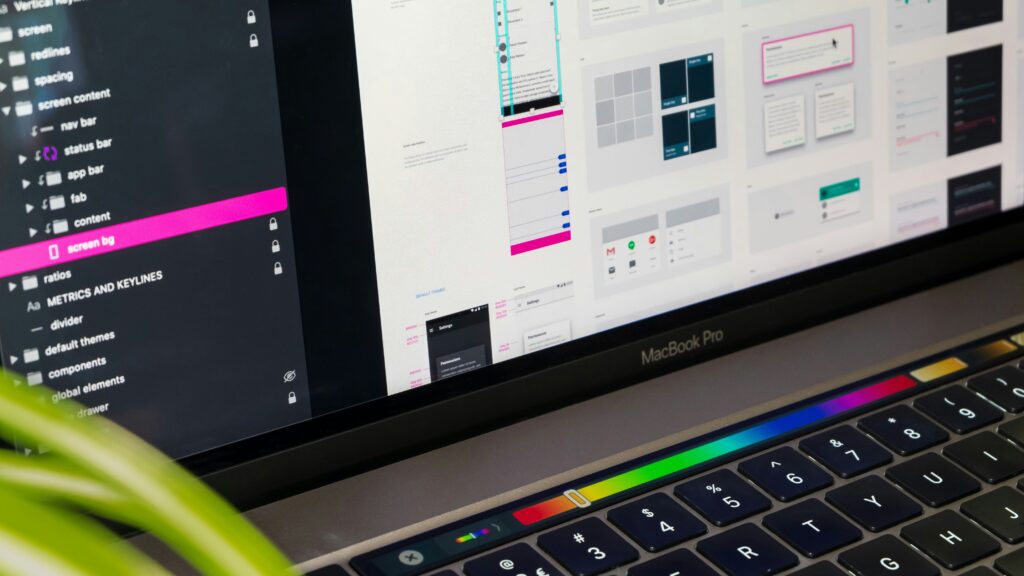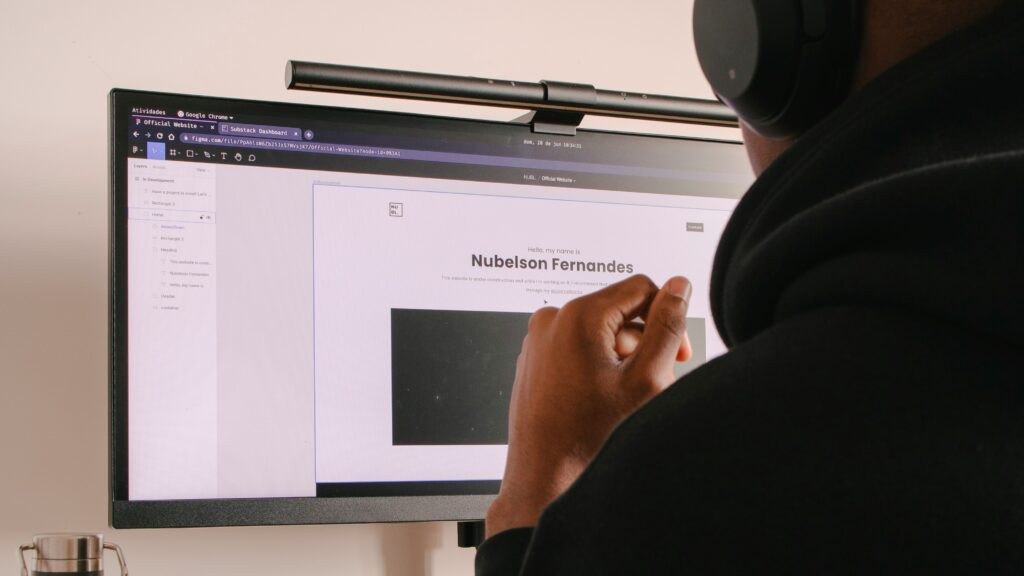
Hidden Costs of Bad UX Design: In today’s fast-paced digital economy, where every click matters and users expect seamless online experiences, user experience (UX) design can be the make-or-break factor for your business. While companies often focus on marketing, branding, and development, they sometimes fail to recognize the Hidden Costs of Bad UX Design—and these costs can silently drain resources, stunt growth, and damage your brand over time.
In this article, we’ll explore what bad UX really costs you—and why investing in excellent user experience isn’t just a design choice, but a strategic business decision.
1. The Most Obvious Hidden Cost: Lost Revenue
Poor UX Destroys Conversions
One of the clearest hidden costs of bad UX design is lost sales. Whether you run an eCommerce store or a SaaS platform, users who find your website confusing, slow, or hard to navigate are unlikely to make a purchase or sign up.
According to Forrester Research, improving UX design can increase conversion rates by up to 400%. On the other hand, clunky UX leads users to abandon shopping carts, ignore CTAs, or give up entirely. These small daily losses add up to major missed revenue over time.
Example: A complicated checkout process or unclear product descriptions can cause hesitation—and in digital environments, hesitation often equals exit.
2. Rising Customer Acquisition Costs
Marketing Can’t Save Poor UX
Businesses frequently pour thousands into ads, SEO, and influencer campaigns to attract traffic. But if users arrive on your site or app only to experience a poor interface, all those marketing dollars are essentially wasted.
The hidden costs of bad UX design show up here as a high cost per acquisition (CPA) and a lower return on ad spend. You’re attracting users, but failing to convert or retain them because the experience doesn’t deliver.
3. High Churn Rates and Low Retention
Friction Leads to Abandonment
It costs far more to acquire a new customer than to retain one. However, users won’t stick around if your UX is full of friction. Poor onboarding, inconsistent UI elements, or slow loading times are common signs of bad UX that cause users to churn.
If users can’t quickly find value in your product or website, they’ll leave—and probably won’t return. This directly impacts your customer lifetime value (CLV) and overall growth trajectory.
Hidden Cost: You’re losing loyal users and potential brand advocates before they’ve even had a chance to fall in love with your product.
4. Damaged Brand Reputation
UX Is Your Brand Experience
In today’s digital-first world, user experience = brand experience. If your website or app is difficult to use, users associate that frustration with your entire brand.
This creates one of the most long-lasting hidden costs of bad UX design—brand erosion. While you may not see the effects immediately, poor reviews, negative feedback, and lack of repeat business all stem from how users feel when interacting with your product.
5. Accessibility and Legal Risks
Poor UX Often Ignores Accessibility
Accessibility is a critical component of UX design. A website or app that isn’t usable by people with disabilities is not just exclusive—it may also be illegal.
Failing to meet Web Content Accessibility Guidelines (WCAG) can lead to lawsuits and compliance penalties, especially in regions like the U.S. under the Americans with Disabilities Act (ADA). This is one of the most underestimated hidden costs of bad UX design.
Key takeaway: Inclusive design isn’t just ethically right—it’s also legally and financially smart.
6. Skyrocketing Customer Support Costs
Bad UX Generates More Questions
When your interface is unclear, your customer support team becomes the fallback. More calls, emails, and chat requests come in from confused users—and support teams struggle under the weight of unnecessary interactions.
These indirect operational expenses are classic hidden costs of bad UX design. You’re not just wasting time—you’re also diverting resources that could be better used elsewhere.
Good UX minimizes friction, which in turn reduces the volume of support tickets and improves user satisfaction across the board.
7. Increased Development and Redesign Costs
Fixing UX Later Is More Expensive
When companies rush development and ignore UX upfront, the consequences often show up post-launch. Complaints start pouring in, bounce rates rise, and teams are forced to pivot or redesign.
This reactive approach leads to technical debt and expensive refactoring. One of the biggest hidden costs of bad UX design is having to rebuild what should have been done right from the start.
UX Tip: Involving designers early in the development process prevents rework and ensures alignment between product functionality and user expectations.
8. Lower Search Engine Rankings
SEO Depends on UX More Than You Think
Google now considers user experience signals like page speed, mobile usability, and Core Web Vitals as part of its ranking algorithm. A poorly designed website can hurt your search engine rankings, leading to reduced organic traffic.
This invisible penalty is another significant hidden cost of bad UX design. It forces businesses to spend more on paid ads just to maintain visibility they could have earned organically.
SEO and UX go hand-in-hand. A fast, intuitive, mobile-friendly website will not only rank higher, but also keep users engaged longer.
9. Missed Competitive Edge
Bad UX Means Falling Behind
In a crowded digital marketplace, great UX is a competitive differentiator. Companies like Apple, Spotify, and Airbnb win user loyalty through seamless experiences—not just features.
If your competitors are offering smoother interactions, faster navigation, or easier purchasing, users will notice—and switch.
One of the hardest-to-quantify hidden costs of bad UX design is opportunity loss. You’re not just failing to gain market share—you’re actively losing it to better-designed products.
10. Slowed Internal Growth and Innovation
Poor UX Creates Bottlenecks
When UX is overlooked, other departments feel the pain. Sales teams struggle to close leads due to usability concerns. Product teams waste cycles fixing minor issues. Growth experiments fail because the baseline experience is flawed.
Rather than building forward, your team is constantly patching mistakes. This slows innovation and creates long-term hidden costs of bad UX design that sap energy from your entire organization.
Why Most Companies Underestimate These Costs

So why are the hidden costs of bad UX design so often overlooked?
- They’re indirect: These costs don’t always appear on a spreadsheet.
- They’re cumulative: Small issues build up over time into big problems.
- They’re shared: No one department owns UX, so accountability is unclear.
But once you start identifying the signs—high churn, low conversions, high support costs—the pattern becomes clear. UX isn’t a design problem. It’s a business problem.
Final Thoughts: UX Is a Strategic Advantage

The hidden costs of bad UX design are real, measurable, and avoidable. From lost revenue and legal risk to reduced search visibility and customer churn, bad UX can silently kill your growth.
By investing in smart, human-centered design from the beginning, companies can boost conversions, improve retention, and unlock innovation across the board. In short, great UX design pays for itself—and then some.
Need Help Eliminating the Hidden Costs of Bad UX Design?
If your business is ready to stop losing customers to clunky design and start building digital experiences that work, it’s time to talk to the experts.
Layerice is a UX and UI design agency specializing in clean, intuitive, and conversion-focused design. From strategy to execution, we help your brand stand out—and scale.
Need distinctive typography and bold visuals to elevate your experience even further? Partner with Phoenix Dungeon Studio, where expressive graphic design meets immersive branding.
Let’s fix the UX before it costs you more than you think.





